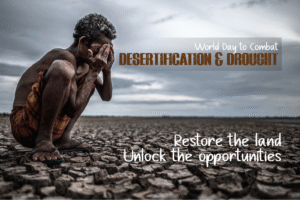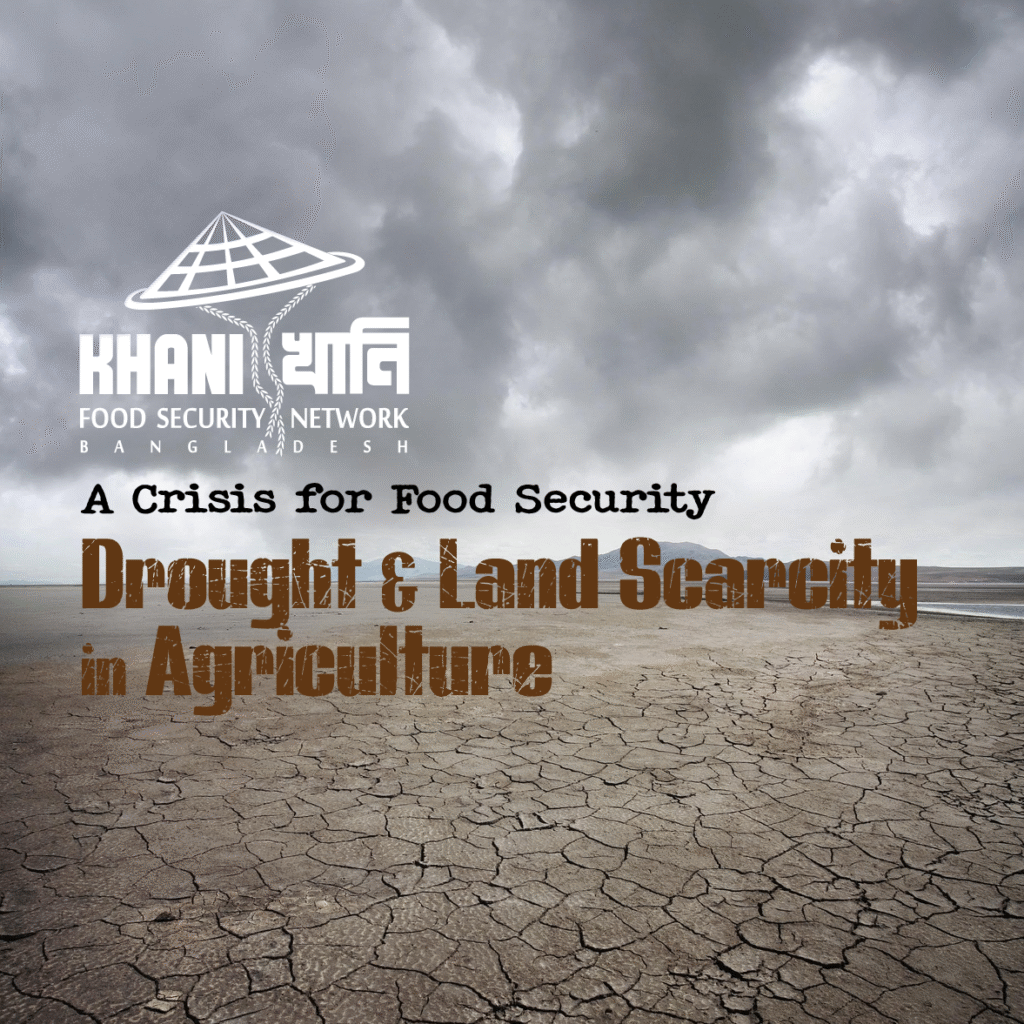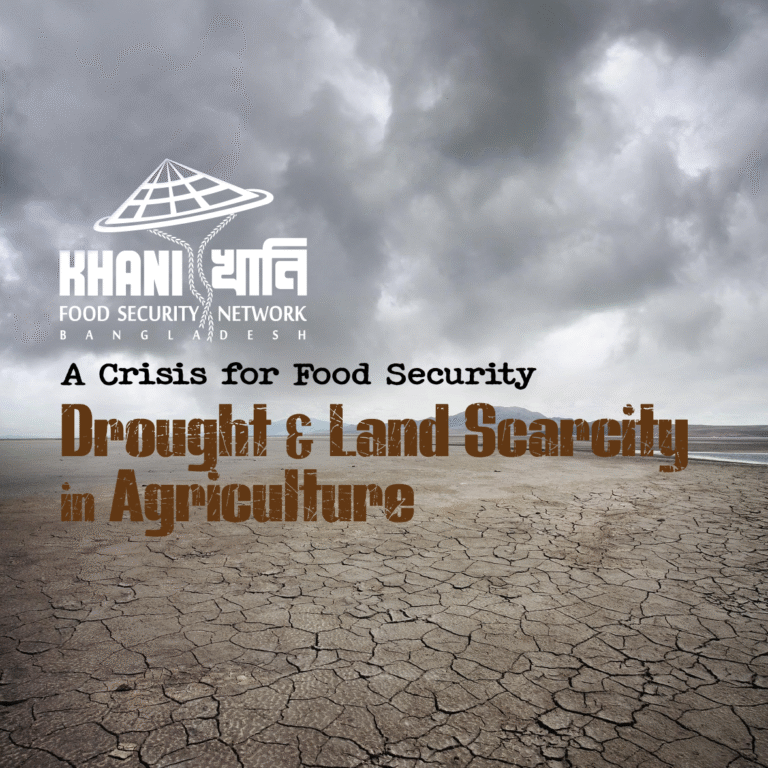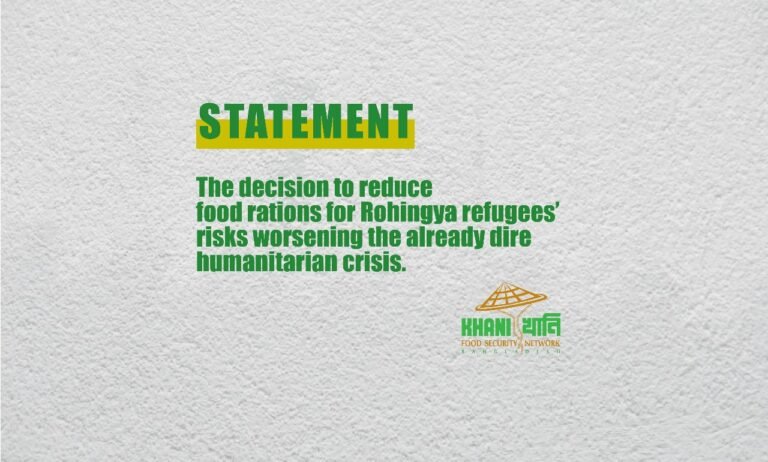DROUGHT is a natural environmental disaster caused by prolonged insufficient rainfall or less rainfall than usual. According to the United Nations Convention to Combat Desertification (UNCCD) 2022 data, about 650,000 people worldwide died due to drought between 1970 and 2019. On the other hand, a 2021 report by the World Health Organization mentions that around 55 million people are directly affected by drought every year. The World Meteorological Organization states that about 90% of all drought-related deaths occur in developing and poor countries.
Bangladesh has suffered from drought 13 times in the past five decades. As a result of drought, there is a crisis of safe drinking water, shortages of water for agriculture, and decreased soil moisture, which severely disrupts crop production. Natural resources like fisheries and forests, as well as other dependent sectors, biodiversity, and livelihoods, are simultaneously threatened. An article published in the Climate Services Journal mentions the negative impacts of drought in the northwestern region of the country, such as increased crop production costs, reduced soil moisture, decreased income, scarcity of pure water, health crises, and difficulties in livestock rearing. Especially in agriculture, drought disrupts crop production, affecting farmers’ income and food security for all. As Bangladesh is an agriculture-based country, drought creates a profound negative process in the overall economy.
The risk of drought manifests differently across Bangladesh’s agricultural regions. In the eastern hill districts, 54.39% of agricultural land is most at risk from drought and is identified as a high-risk area. In the southeastern region, 63.02% of agricultural land is at moderate risk of drought. The southwestern region is relatively safe from severe drought, as there are no high-risk areas, but 33.37% of land is at moderate risk and affected by drought due to water and soil salinity, so it cannot be ignored.
The northwestern region is the most sensitive in terms of moderate drought risk—60.74% of agricultural land in this area is at moderate risk. Drought is common in the Barind region and the northwestern and northern parts of the country. At least 22 districts—more than one-third of the total districts—are in this region. Due to drought, 45% of the Barind region’s land has become uncultivable or non-agricultural. Since 1971, marginal farmers have lost cultivable land due to drought and water scarcity. Unregulated groundwater extraction over the past few decades has caused the groundwater level in the Barind region to drop by an average of 18 meters by 2021. As the water table drops, there is a shortage of irrigation water, and trees cannot absorb necessary moisture from the soil, causing them to die. This disrupts agricultural production and makes new cultivation or afforestation difficult. If groundwater extraction is not regulated and surface water use is not improved, environmental degradation in this region due to drought will intensify further.
There are generally three types of drought in the country: drought due to low rainfall, drought due to drying up of rivers and water bodies, and drought caused by salinity and imbalance of soil nutrients. Along the coast of Bangladesh, the third type—drought caused by salinity and mineral imbalance—is rapidly becoming acute. Due to recent natural disasters and the intrusion of excessive tidal water, the salinity of freshwater sources like ponds in 19 coastal districts of Bangladesh has increased. According to government statistics, as a result of Cyclone Remal in 2024, the water in 20,000 ponds in coastal areas is still not suitable for drinking. There is no shortage of water, but this water is not suitable for cultivation or drinking—this is a new kind of crisis. Experts are identifying this situation as a different form of drought.

Research by the United Nations Food and Agriculture Organization suggests that in the next 30 years, humanity will need about 60% more food than at present. Researchers fear that shortages of food and other resources may lead to crises. One of the main causes of this crisis will be desertification and drought, which may also lead to conflict.
To raise awareness about drought and desertification, World Drought and Desertification Prevention Day is observed every year on June 17. The theme of World Drought and Desertification Day 2025 is “Restore the Land, Unlock Opportunities,” emphasizing the positive impact of land restoration on the economy, livelihoods, and the environment. Although desertification, drought, and land fertility loss are global crises, in the context of South Asia—especially Bangladesh—they have become a terrible reality, and in recent years, extreme heat is pushing all regions of the country toward even more dire situations.
According to reports from the World Food Programme and the United Nations Convention to Combat Desertification, globally, 1 hectare of land loses fertility every 24 seconds. In Bangladesh, on average, about 1% of arable land is lost to non-agricultural use every year, with drought being a major cause. According to research by the Bangladesh Rice Research Institute (BRRI), 3 to 4 million hectares of crops are damaged by drought every year.
In Bangladesh, disasters like cyclones and floods receive much attention, but drought is not discussed or addressed as deeply. Yet the impact of drought is not limited to crop loss—it severely affects people’s livelihoods, food and nutrition security, health, and the overall socio-economic structure. Drought increases social violence, causes acute water shortages, and leads to the loss of many people and livestock, directly impacting human life and livelihoods.
To make agriculture and food security sustainable, it is essential to prioritize land restoration at the national level by making drought-affected land suitable for crop production. In this regard, climate-resilient agricultural planning in drought-prone areas, planned management of depleting water resources, crop diversification, ensuring weather-based agricultural information services, introducing organic fertilizers and climate-friendly cultivation on dying lands, increasing budget allocations for climate adaptation and land management, protecting the rights of landless and marginalized populations over land, and involving local people in land management planning should be emphasized. These measures will form the foundation for our social and economic transformation and pave the way for uninterrupted food production systems.




